This piece was originally published in our “Fresh Bites” Spring 2022 Owner Newsletter.
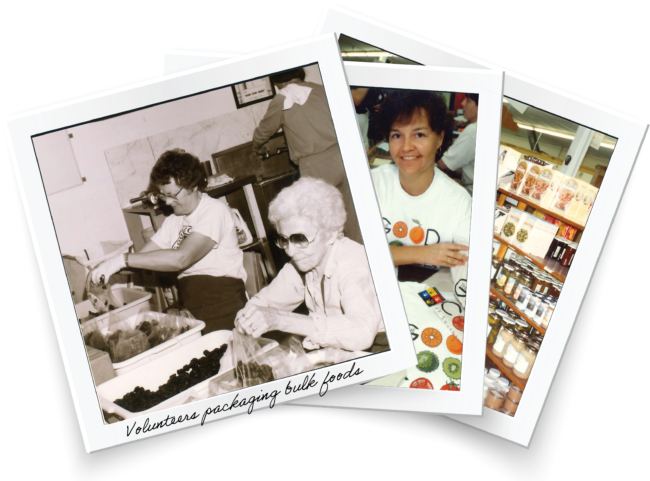
The gentle, easy atmosphere at the Good Foods Co-op of today is a far cry from the radical activism that spawned its conception in 1972. Founding members, many of whom were students at the University of Kentucky, were products of the 1960s counter-culture movements, espousing anti-war, women’s rights, food justice and environmental activism, while also keeping tabs on the growing criticism for industrialized agriculture.
“Good Foods was birthed out of this community of folks connected in some ways with UK but also people who were visionaries, activists, hippies… [and] critical thinkers who had a love for good food, good health, justice and democracy. So, the Co-op was an opportunity to manifest democracy around the critical question of food and health,” said co-founding member Jim Embry.
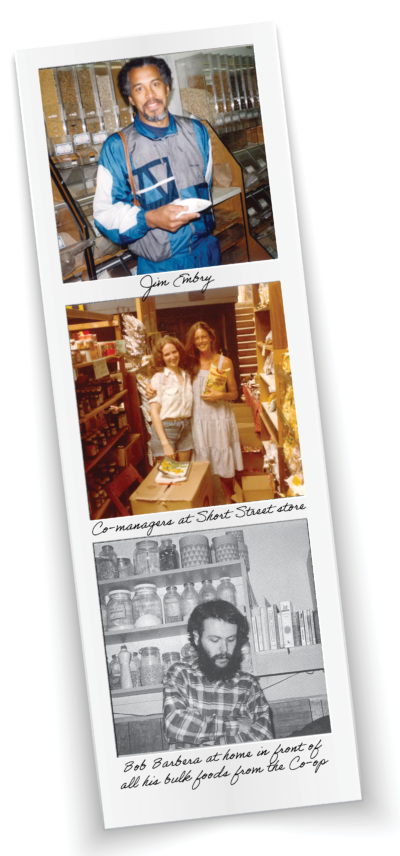
Embry was no stranger to cooperatives when his fellow UK students started congregating around the idea of a food co-op. Growing up, his family, hailing from Madison County, was already entrenched in many cooperative ventures, like Black farmer cooperatives and Black teacher associations, born out of the need to build and protect Black communities after the Civil War. Once into adulthood, Embry and many other Co-op founders had been influenced and challenged by the ever-growing library of literature surrounding organic farming and vegetarian eating. By the early 1970s, the seminal work Silent Spring by Rachel Carso had inspired an entire generation to strongly reconsider their eating habits. “As founding members we were basically looking, searching for an alternative to the corporate agribusiness control of our food supply with the corresponding negative impacts on people and the planet. So, we wanted to get access to food without chemicals, to get access to local food, to get access to organic food and healthy food. And this effort to form Good Foods in our lives was a game changer!” recalled Embry.
Early member Bob Barbera was in his early 20s and living in a communal household when he first heard about the Co-op. Frustrated by the limited choices in town to find basic items like brown rice and whole wheat flour that didn’t cost an arm and a leg, he and his housemates decided to learn more about this new enterprise.
“We attended a pot luck luncheon/business meeting in some huge house on Third Street off North Broadway. There was a lot of connection-making and a good vibe happening so we signed up as a household,” said Barbera. He recalls annual dues were about $3 and members needed to acquire a food handler’s permit, which was $1 per person.

Barbera recalls feeling excited to be part of the Co-op, right from the first meeting, describing it as “a community working together for better foods— young and old alike with a common purpose.” Those taking part from the early days didn’t have an easy task ahead, though. Each member was expected to pull their own weight and make good use of those food handlers’ permits. Initial challenges included raising capital to acquire their first storefront on South Ashland Avenue and to stock out the shelves with inventory—quite a departure from their original strategy of simply dividing all orders equally between members.
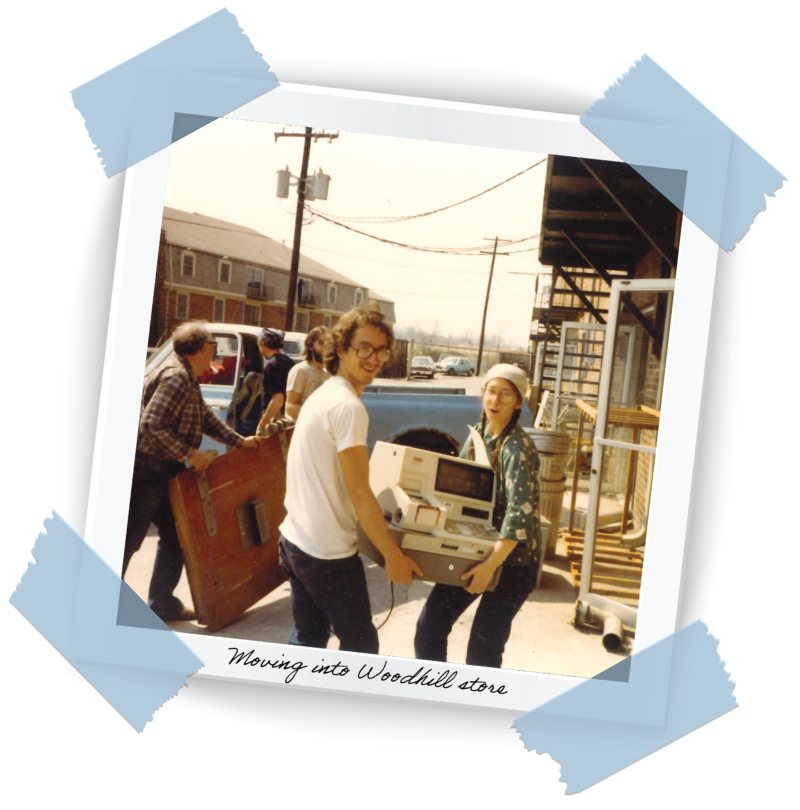
Barbera remembers the difficulty in finding enough volunteers to package orders, clean up the store and help with unloading bulk deliveries. But it wasn’t all an uphill battle. “These were exciting times for me. I was surprised and glad when I saw the age span of the members and the sense of Lexington community it was engendering in me. It was a lot of fun working in the store with volunteers from all over the city at the time,” he reminisced.
Founding members had to split up the important job of sourcing food products too. Embry recalls driving to Dayton to pick up peanut butter, and getting creative to get access to fresh produce. “During the Florida citrus season [we would get] a monthly big truck delivery brought to Lexington on the way north. The truck would stop somewhere at an I-75 exit and we would go in our cars, trucks, vans to pick up our order,” said Embry, recalling that access to local produce was limited at first, but steadily grew as the Co-op created a demand for it, and farmers found methods to fill that demand.
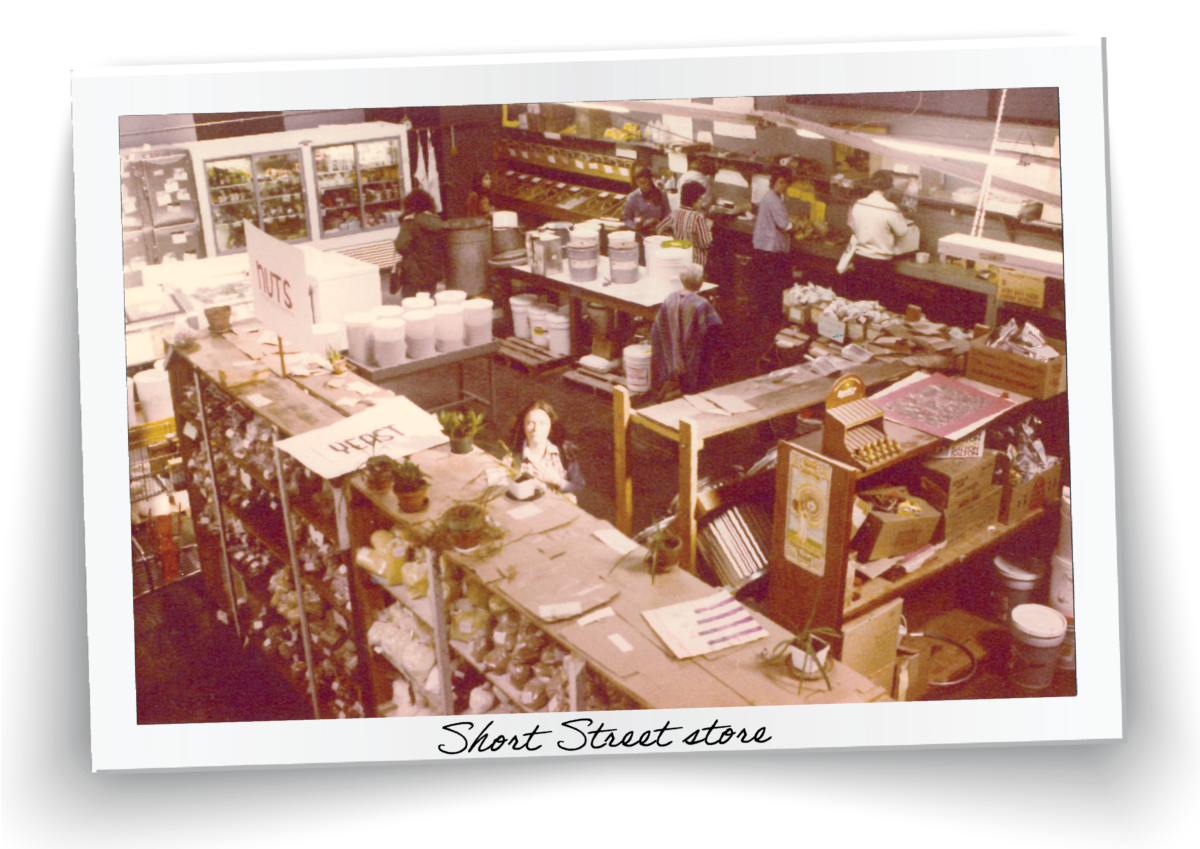
Rona Roberts remembers the early days of the bulk buying club, meeting in people’s homes to divide up huge bags and boxes of products, even cutting entire wheels of cheese. “It was awkward, all of it, and promising.” She also recalls how getting an organization off the ground can sometimes be a challenge with so many strong—and sometimes opposing—viewpoints and diets.
“The people who had the inventive ideas about the cooperative were not necessarily good at setting up a cooperative grocery, and vice versa. Member meetings could be gnarly, with a strong intention toward mutual hospitality but without lots of people really knowing each other well. Food issues were huge: sugar was the most devilish of devils, but there were so many things to learn about and avoid, and not include in one’s potluck dishes!”
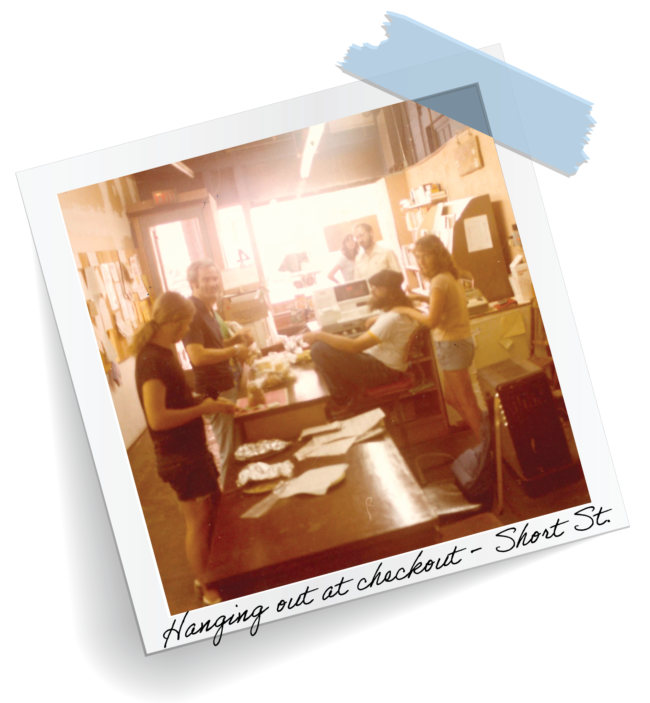
Founders and early members came with a variety of life experiences, beliefs and personal goals for the Co-op, which became apparent as the organization galvanized its strategies and shared purpose. “Owner meetings or committee meetings were hard work. I don’t remember a single one that was fun. They felt important and necessary, but the personalities were so strong and people tended to frustrate each other it’s a miracle we survived to this point!” recalled Roberts.
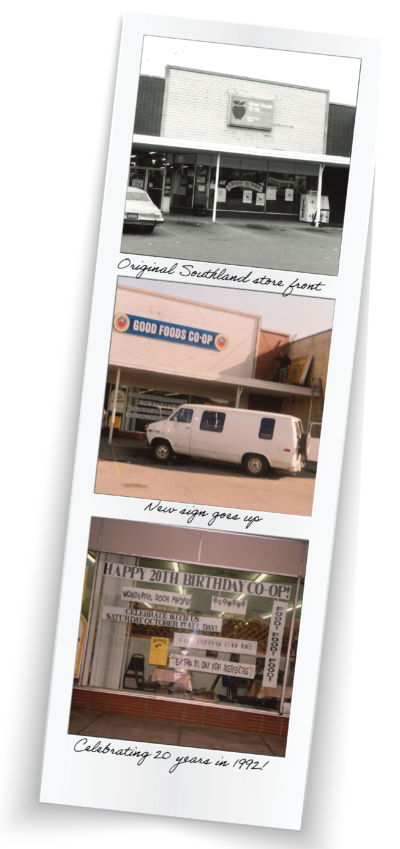
Roberts gives a lot of credit to servant leaders in the early days, like Claire Carpenter, who even after losing her re-election to the board, made sure the Co-op was successful. “She immediately found other ways to contribute. She spent just as much time making sure the Co-op could move forward as she had when on the board. Had she not, I am convinced the people who unelected her would have driven the Co-op into a ditch,” said Roberts.
Through the years and various locations and incarnations, the Co-op survived and eventually landed within its current shopping strip on Southland Drive 36 years ago, eventually moving into its current space in 1999 and then adding the café in 2002. Many of our early owners admit that the current location is their favorite.
“I like that I can get extraordinary food and other products from the Co-op as a matter of course,” Roberts reflected. “I like this iteration of the Co-op better than any earlier one. I believe staff are happier now, and better at welcoming customers. I like a wider set of choices in products. The stable, steady hours and well-managed stocking amazes me. Managing to create a ‘real store’ feel while still featuring extraordinary products is a feat to be celebrated.”
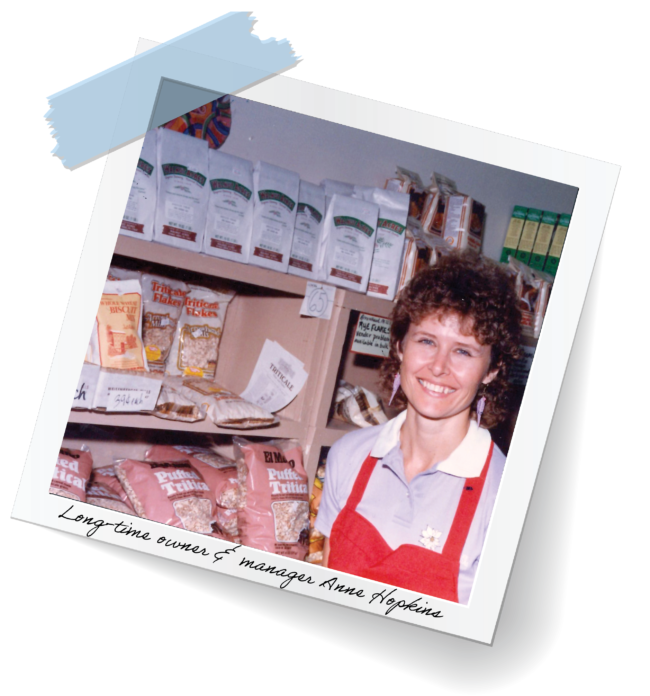
Barbera says he’s proud to be part of “something enduring” and to have connections to succeeding generations of like-minded shoppers. Before the virus, it was the place to meet friends for dinner and community. We would always say, if you’re in a hurry, don’t shop the Co-op or you’ll run into fifteen people you know and want to keep up with.”
Lexington Vice Mayor Steve Kay, who has served as a volunteer, board member and amateur cheese cutter during his 50 years of Co-op membership, looks back on the past six decades with pride for all the adversities overcome along the way. “The thread that runs through all my Co-op experiences has been the pleasure of working with others committed to making the Co-op a success. The Co-op is a great store, but so much more. The Co-op is a concrete, practical embodiment of the ideal of cooperation, and I think fondly of the many people who have persevered through some hard times to keep the Co-op in our lives.”
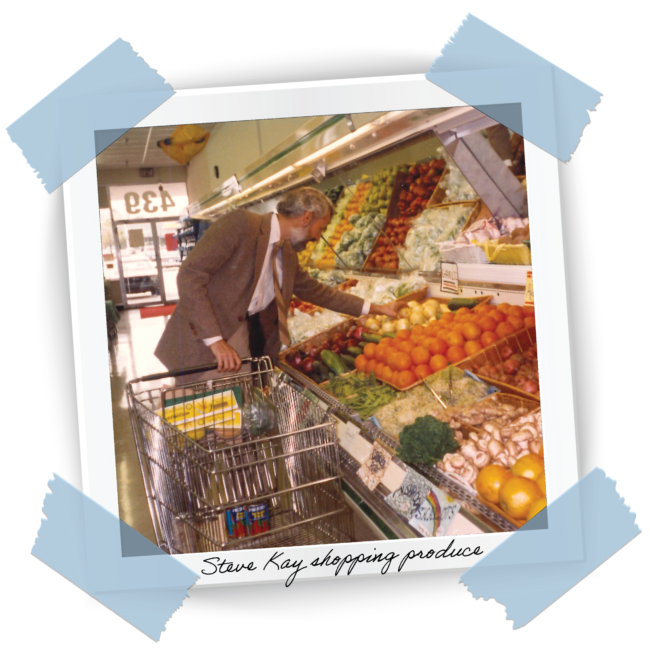
“Our Co-op helped change the food and agriculture situation in Kentucky, and with other co-ops around the country, has changed the landscape of food… throughout the country,” said Embry. “This is, in my view, one of the most important developments in our nation’s history of the last 50 years.”
Current Co-op staff, owners and shoppers owe a debt of gratitude to the founding and early members who stuck it out and made this Co-op survive long enough to be able to thrive. Thanks to a seed planted 50 years ago, and nurtured through the decades by dedicated doers, our little Co-op is a staple of the Lexington community, and part of a larger movement to revolutionize how we shop and eat. The shockwaves created by that small group of activists in 1972 continue to reverberate and resonate through the next generation of cooperators, providing the inspiration that will guide Good Foods into another half-century and beyond.
Owners are invited to join us as we celebrate the past half-century at our Annual Owners Meeting on Sunday, May 1, where founder Jim Embry will be our featured speaker. You can find more details about the event and RSVP here.
Learn more about the Co-op’s past 50 years by visiting the Our History page.
